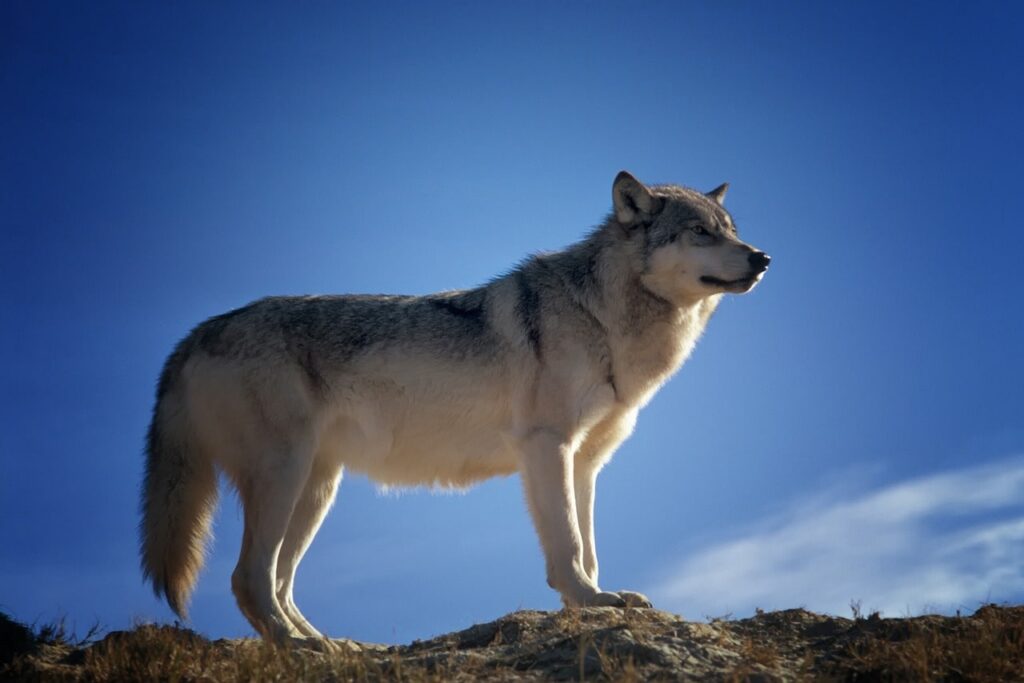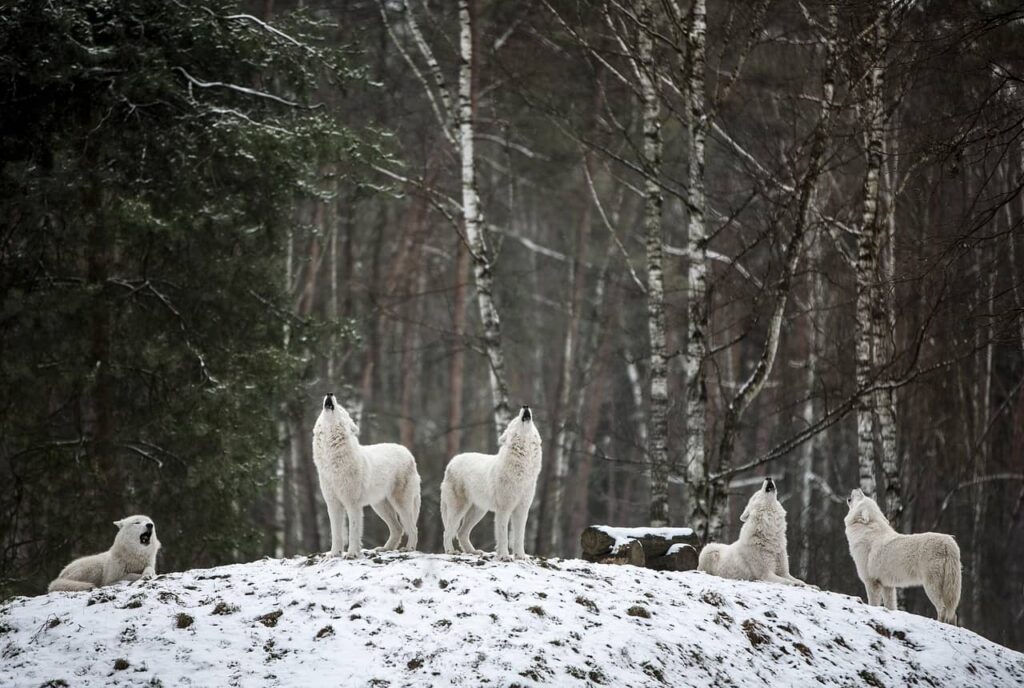Astonishing Wolf Facts You Should Know
Wolves are talked about a lot in the human world. We see them in movies, read about them in stories, and hear songs featuring them, which shape our views. But, there are many amazing things about these creatures that most people don’t know. So, here are 10 incredible facts about wolves that will surely amaze you.
Wolves Are Highly Social Animals
Adult gray wolves can live independently and might need to do so for a while after leaving their birth packs. Once they find a mate, wolves are highly social and often stay together for life, forming a new wolf pack or nuclear family—the basic social unit for wolves.
Gray and red wolves both breed once a year in late winter or early spring, with a gestation period of about 63 days. Typically having four to six pups in a litter, these pups are born blind, deaf, and reliant on their mother. All members of the pack, including parents and older siblings, care for the wolf pups. The pups grow quickly, exploring outside the den after three weeks and reaching nearly adult size within six months. Wolves become mature at 10 months but may stay with their parents for a few years before venturing out on their own.

Wolves Are Renowned for their Territorial Behavior
Wolf Can Communicate through Howling
Wolves communicate effectively, with howling being a key method. Contrary to popular movie portrayals, howling isn’t linked to a full moon; instead, it’s a way for wolves to signal the pack to come together or prepare for defense against potential threats. Additionally, howling aids in locating a missing pack member.
Wolves use various methods, such as body language, whines, barks, whimpers, eye contact, postures, and facial expressions, besides howling. They choose different ways based on the situation; for example, they prefer silent communication when hunting to avoid alerting prey.
Average Wolf Teeth
A regular wolf has 42 teeth in its mouth, including 12 incisors, four canines, 10 molars, and 16 premolars. The canines, growing up to 2.5 inches, are the most prominent and are used to grasp prey.
Modern wolf studies have debunked the concept of an “alpha wolf.” Research indicates that wolf packs, contrary to previous beliefs, function as family units led by parents rather than a strict dominance hierarchy. The term “alpha wolf” is now considered a myth, and a more accurate understanding of wolf social dynamics recognizes the significance of family bonds and cooperation within the pack.
Wolves in Captivity may Live Longer
Wolves in the wild usually live 6 to 8 years, although some can reach 14 years. Interestingly, in captivity, they may live even longer, sometimes up to 16 years.
Wolves and Dogs are Genetically Similar
Wolves and dogs are closely related genetically. They share many similarities in their DNA. This is because dogs, through domestication, have evolved from wolves. Despite their differences in appearance and behavior, their genetic connection highlights the common ancestry between these two fascinating canines.
Wolves Help in Regulating Eco-System
Wolves, like many other top predators, play a crucial role in maintaining ecosystem balance. A notable instance of this occurred in the 1920s in Yellowstone National Park, where gray wolves lived. The decision to eliminate the wolves was initially seen as positive, but it had negative consequences. Without wolves, the elk population in the park surged, and they consumed resources at an unsustainable rate. This resulted in the overgrazing of aspen trees and other crucial food sources for various animals. The elk’s unchecked feeding even led to erosions, as they consumed vegetation along the banks of wetlands and streams.
Myth of Wolves Howling at Moon
The media popularized the idea that wolves howl at the full moon, but that’s not true. Wolves howl to talk to their pack or to scare away other wolves. And guess what? These howls travel really far—they can be heard up to 10 miles away.

Howling is Social Call of Wolves
Wolf Pack Need Large Territories
Wolf packs require expansive territories to ensure an adequate prey supply, and the size can differ significantly based on factors like climate, terrain, prey availability, and the presence of other predators.
As per the U.S. Fish and Wildlife Service, gray wolf territories vary in size from 50 to 1,000 square miles. Wolves exhibit extensive coverage while hunting, covering up to 30 miles in a day. They typically trot at around 5 mph but can reach speeds of up to 40 mph for short distances.
Fun Facts
- Despite being perceived as a danger to humans, wolves have few documented cases of attacking humans, and many reported incidents have not led to significant injuries.
- In terms of color and range humans have better eyesight as compared to wolves.
- Gray wolves won’t attack if their prey stays still. They wait for the prey to start running before they chase it.
- A regular wolf’s saliva can help heal wounds by promoting tissue growth and fighting infection.
-
Red wolves have noticeably larger ears than other kinds of wolves.



